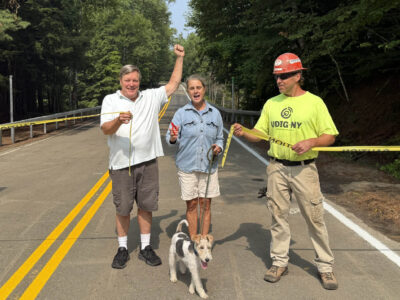SLCS lights: A bird’s perspective
To the editor:
We are flying south now. For generations, the Adirondacks have been our sanctuary, a rare refuge where the night sky remained dark enough to guide us safely across forests and lakes. But this year, something feels different.
As we passed over Saranac Lake, the new athletic field lights blazed so brightly they swallowed the stars we have relied on for thousands of years. We circled in confusion, burning precious energy we need to survive. Some of us collided with structures we could not see. Too many will not make it to our wintering grounds.
Artificial light at night is devastating for migratory birds. We navigate by starlight, and when that natural compass is erased, our ancient pathways begin to unravel. The Adirondacks have long been one of the last strongholds of dark skies in the eastern United States, but even here, our sanctuary is fading.
We do not understand why this decision was made. Your community faces so many challenges. School enrollment has dropped nearly 46 percent in the past 30 years, from 1,910 students in 1995 to just 1,037 today, with projections falling below 1,000 in just two years. Families are struggling, with 18 percent of local children living below the poverty line. Yet while budgets are strained and staff are being laid off, money was spent on lights so bright they change the very character of the night.
And the impacts reach far beyond us. Scientists know artificial nighttime lighting disrupts human sleep cycles and increases risks for obesity, certain cancers, and mental health disorders. It confuses pollinators, disorients insects, and alters the patterns of countless nocturnal animals. Even the Adirondack Sky Center and Observatory, which draws visitors from across the country, depends on these dark skies for research and education. Tourists travel here to see the Milky Way without a telescope. Once that experience is gone, it cannot be brought back.
We are leaving now, but next spring we may hesitate to return to a place where the stars no longer guide us. You can still protect what makes this region extraordinary. Neighboring communities like Lake Placid and Schroon Lake are already working on dark skies laws to safeguard this rare gift. Shield the lights. Use motion sensors. Choose balance over brightness.
The Adirondacks’ dark skies are irreplaceable. Please, keep them that way.
Robert Gilbert
Saranac Lake

